Raitt Mariners in the Napoleonic Wars
By 1806, the French had managed to conquer or make alliance with every major power on mainland Europe. This allowed Napoleon to launch his Continental System, an attempt to undermine Britain's economy by forbidding Europeans from trading with it. At the start of the Napoleonic Wars (1803-15), Denmark was officially neutral. But its government came under increasing pressure from France and Russia to pledge its fleet to Napoleon. This would help secure the North Sea and Baltic Sea, and exclude British commercial shipping from Nordic ports. Denmark's ships and crews were of high quality and in 1801, they had bitterly resisted - but eventually been defeated by - a British naval force at the First Battle of Copenhagen. This came after the Danes had joined Russian, Swedish and Prussian attempts to stop Royal Navy interference in Baltic trade - part of wider British efforts to weaken French commerce. Despite this earlier defeat, the Danish fleet was still formidable in 1807. It included around 20 ships of the line, 17 frigates and many gunboats. The prospect of this force falling into French hands alarmed the British as it could pose a threat to British naval supremacy and possibly even support an invasion of Britain by Napoleon. Initially, the British tried to persuade the Danes to hand over the fleet peacefully and sign a treaty of alliance. They promised that they would return the warships once the war with Napoleon was over. When the Danes refused to end their neutrality, the British decided to act. As outlined in the Copenhagen Expedition article on the National Army Museum's website, following the above account, in 1807, the Royal Navy and the Army undertook a joint operation to prevent the powerful Danish fleet from falling into French hands. It ended with the British occupation of Copenhagen and the capture of Danish warships. However, plenty of activities were also going on elsewhere!
----------
Captain William Raitt’s exploits as commander of the sloop Scout (18 guns) during the Napoleonic Wars are worthy of note. HMS Scout was a Cruizer-class brig-sloop built by Peter Atkinson & Co. at Hull and launched in 1804. She participated in a number of actions and captured several privateers in the Mediterranean during the Napoleonic Wars. Commander William Raitt assumed command of the Scout in February 1806 and on the morning of 27 March 1807, off Cadiz, Scout, engaged the Spanish felucca privateer Admiral, out of Tarifa, under the command of Sebastian Boralta and with a crew of about 100 men. The Scout saw the ship about an hour before it anchored, but was five hours getting within cannon range. As the Scout approached, the Admiral fired the two 24-pounder guns she carried in her bows, but the crew of Admiral were forced to cut her anchor cable and run her onshore within 10 minutes of the start of return fire. Evidently pierced by the Scout's shots, the Admiral began filling with water. The strong surf prevented the Scout from sending her boats to capture the Admiral, and by the time Captain Raitt sailed in the next day the felucca had wrecked completely.
On 10 May the Scout captured a Spanish settee, the San Antonio Abad, of nine men and 20 tons burthen, sailing from Marabella to Ceuta with a cargo of bricks, leather and the like. Two days later, Scout captured a Spanish brig carrying bale goods and loaf sugar. Late on 21 May, Commander Raitt sent his boats and those of Morgiana in pursuit of several vessels spotted sailing past Cape Trafalgar with the aim of clearing the Straits under cover of darkness. Although the ships pursued fired heavily, Raitt’s boats succeeded in capturing one of the privateers.
On 13 June the Scout and her sister-ship Redwing chased three vessels into the Barbate river. Commander Raitt sent boats from both the Scout and the Redwing to destroy the vessels, which consisted of a Spanish privateer and a felucca The Spanish privateer was the De Bonne Vassallio,with a crew of 42 men, all but four of whom escaped ashore. The boarding party also captured two signal posts, together with their flags. On 21 June Scout captured the Fair American and that same day, the Scout was off Lagos in the Algarve with Major General Spencer on board. On 11 September Scout captured the Danish ships Gode Haab, Jacob Kielland and Son, and Anna. Then on 20 October the Scout detained the Russian ship Bella Aurora.
On 4 April 1808 the Scout captured the American ship Mary Alice, then on 7 December, she joined Vice-Admiral Lord Collingwood's squadron off Toulon. Early on 14 June 1809, near Cape Croisette south of Marseilles, Raitt encountered a convoy of 14 Spanish merchant vessels and two gunboats. The Scout set off in pursuit but after the wind dropped in the afternoon Raitt had to continue the pursuit using his boats. The convoy dispersed as seven of the vessels headed for a small nearby harbour. Scout's boats went in under fire from a shore battery; however, a landing party captured the battery, spiking the two 6-pounder guns there. The boats then captured and sailed out the seven Spanish vessels which were carrying wool, grain, leather, flour and cheese. Raitt destroyed two of the vessels after removing their cargoes; the five others he sent to Port Mahon. A landing party from the Scout made a similar attack on a battery at Carry-le-Rouet, some 20 miles west of Marseilles on 14 July. The landing party captured the fort and spiked the guns. In the attack the British killed five enemy soldiers and captured seven, without suffering any loss themselves. At some point in 1809 Commander T. Stamp took temporary command of the Scout, and in October 1809 Commander Alexander Renton Sharpe replaced Raitt.
In response to a letter written to William, Duke of Clarence (later William IV), by Vice Admiral Collingwood, William said “I am glad that your Lordship is satisfied with the conduct of our officers and men on this occasion; and am clearly of opinion, that the lieutenants deserve, and ought, to be promoted. I am for liberal rewards: the gallant Raitt, of course, comes within my ideas of promotion and gratuities. I have ever been, and ever shall be, of opinion, that zeal and bravery ought to be the sole causes of promotion.”
The gallant William Raitt, here noticed with so much honour, was not long after promoted to the rank of postcaptain. He had received, before this, a flattering mark of his great commander’s approbation, in a letter dated Ville de Paris, 1st August, 1809. “I have seen with satisfaction,” said Lord Collingwood, “the zeal and intrepidity which have distinguished your public services on this and other occasions, and the gallantry with which your enterprises have been executed by the officers and company of the Scout. They have excited my admiration; and I shall have much pleasure in transmitting to the Lords of the Admiralty a detail, in which your merits are so conspicuous.”
Captain Raitt also played a minor role in 1806 in attempting the
recovery of the Stuart Papers from Rome.
There is a brief mention of him in the Aberdeen Journal for Wednesday 19 December 1810 when he is counted in the list of subscriptions for enlarging the church of Footdee. He gave £5 5s – a substantial amount (and one of the largest) considering the City of Aberdeen gave £31 10s (the highest). (Footdee was a small fishing village at the mouth of the Dee and Aberdeen harbour, long since swallowed up by the expansion of the city. The village dates back to medieval times but the fascinating present day cluster of cottages was laid out by influential Aberdeen architect John Brown to rehouse the cities fishermen in 1809.) Captain Raitt died at Aberdeen, his native place, on the 4th of February 1816, in the forty-third year of his age.
Wikipedia has a lengthy page on HMS Scout with mention of William Raitt.
----------
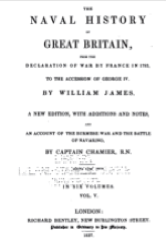
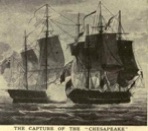

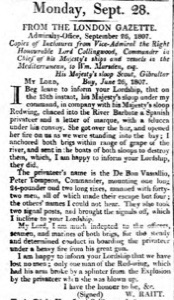


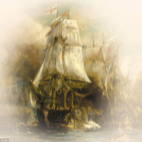

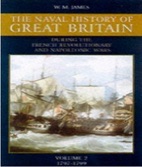
Whilst adding new details about various Raitt master mariners such Captain Charles Raitt of Dundee and coming across some new names, I found that several merchant seamen captains named Raitt had been caught up in the Napoleonic Wars during their voyages to and fro through the Baltic Sea and other European waters. The whole period is rather interesting and I thought it useful to give a bit of background to the conflict and detail the experience of a few Raitt captains. To this end, I have also removed from the Military Raitts page and added to this one the exploits of William Raitt, captain of the Royal Navy ship Scout in the early years of the Napoleonic Wars. Also included here is Captain David Raitt from Dundee and Captain George Raitt from Aberdeen.
----------
News on 17 March 1808 which appeared in the Bristol Mirror for 19 March, mention was made of a letter from Mr Fenwick, late British Consul at Denmark, to a gentleman in Dundee, dated Helsinburgh, 21st Jan, he states "that the Arethusa, Raitt, and Speedwell, Sime, both of Dundee, are lost upon Jutland, and the Masters, as well as the crews, confined at the deport of prisoners at Randers. I am, however, glad to learn that they are all well, and receive good treatment. The reason that they cannot write to their friends is the strict adherence of the Danish Government to the edict prohibiting correspondence with Great Britain."
Presumably this letter refers to the following terse report in The Caledonia Mercury for 21 July 1808:
"The following Captains of vessels taken by the Danes in the Sound have escaped from the prison of Helsterbro', in North Jutland, and arrived at Heligoland, viz. Capt Freeman of Hull; Davidson of Sunderland; John Kidd, of Arbroath; David Raitt, and William Stewart, of Dundee; and John Miller of Kirkcaldy. -- Capt. Freeman is arrived at Hull. The others were to sail from Heligoland about the 10th, in some vessels belonging to Leith, which had been delivery coals at the island. The circumstances of their escape are extraordinary, but we have not room for particulars."
Luckily, I found the particulars were provided in The Scots Magazine, 1 December 1808, pp947-8.
"Last summer, the Danes captured a number of British ships, which had lost their convoy, the crews of which were sent to prison, and treated with much severity. The following narrative of the miraculous escape pf Capts. Miller, of Kirkcaldy; Raitt and Stewart, of Dundee; Kidd, of Arbroath; Freeman, of Hull; and Davidson of Sunderland, from Helstersbro’ prison in North Jutland, contains many interesting particulars.
“They made their escape of the evening on the 20th of June, by rolling themselves down the bank of the field in which they were permitted to walk, and thus eluding the vigilance of their guards. After travelling westward for two nights, and hiding themselves among the corn by day, they reached the beach, not far from Bovenbergen, and found a boat about thirty feet long, bu seven feet. In this they put to sea, having with them only about a gallon of water, and a small quantity of bread brought off in their pockets. They had neither compass nor sails; but the latter they supplied by taking six shirts to pieces and sewing them together with the yarn of their stockings. Their allowance of food was half a penny loaf of bread a day, and half a tea-cup full of water night and morning, each man. On the 24th, they found a haddock floating in the sea, which they divided among them. The weather being at times very angry, they were compelled to steer along at no great distance from the shore, intending to make Heligoland [a small archipelago in the North Sea. A part of the German state of Schleswig-Holstein since 1890, the islands were historically possessions of Denmark, then became the possessions of the United Kingdom from 1807 to 1890]. On the evening of the 36th, they ran within an island, and two of them landed on the continent, and made, with their bottles, towards a house about a mile distant, in search of water and food, but had only proceeded a short way, when they were chased back to the boat by two French dragoons. Putting off towards the island, they lat to, near it, during the night, being in a most distressed state, having had no water for 16 hours, and suffering so much from thirst that they could not swallow a morsel of bread. Fortunately it began to rain, and by the help of their shirts and sail, they collected about a gallon of dirty water, which prevented them from delivery themselves up to the enemy, as otherwise they must have been necessitated to do.
“After suffering much from the cold and rain, and the weather being unfavourable, and their provisions nearly expended, they made Newark Island [Neuwerk - an island and quarter of Hamburg in the German Bight] in the afternoon of the 27th, and ran past it to within half a mile of the shore, where they lay to, intending to land to procure water in the evening. — Being greatly exhausted, however, they all fell asleep in the night, and were awakened by a Cuxhaven fisherman, who had waded to them from the shore. On stating their case to him, he advised them to put off immediately, as otherwise they would be in imminent danger of being made prisoners by the French, and recommended their landing on Newark Island, where there were no troops.—They accordingly landed near a single house, where they replenished their bottles of water, but could not prevail upon the people to supply them with any bread. They put off again from the island at one o’clock in the morning of 28th, and at seven the same evening got aboard a vessel lying on the banks to the eastward of the Elbe, loading shells for Hamburgh. On board his vessel there were only two men, who supplied them with water, a small compass, and about two pounds of bread. At two next morning they left this vessel, and about seven in the morning of the 30th, to their great joy, came in sight of Heligoland, and were treated with utmost kindness, by the governor, council, and inhabitants.
----------
Then under the heading French Privateers in the Caledonian Mercury for 13 April 1799, we read that [on 12 April] the Lord Provost received the following information:
'At Aberdeen, the 11the day of April 1799 years, in presence of Charles Farquharson, Esq, one of the Bailies of Aberdeen,
Compeared George Raitt, late Master of the sloop Lively of Aberdeen, who, being judicially examined, declares That on 17 March last, he sailed from Hull with his said vessel, having on board a cargo of goods, bound for Aberdeen, in company with the brig Lady Leys of Leith; That on the 18th, when off Flamborough-head, bot vessels were captured by the French privateer Resolue of Calais, commanded by Captain Plucket; That the declarant, and two of his crew, were put on board the privateer, and carried to bergen, where they arrived on the 23rd; That, when at Bergen, he was informed that there was a privateer lying at Stavanger, and another about sixteen miles from Bergen; That there were none other at Bergen when he left it on the 5th instant, and he was told that the Resolue was to sail on another cruise on Sunday last, the 7th.
The Resolue is a brig-rigged, yellow sides, black waste - carries a main top-gallant royal, but no royal on the foremast - mounts 16 guns, with about 100 men - had a good deal the appearance of a gun-boat being very low in the water - has two broad blue vanes at the mast head - square sails, except the top-gallant sails which are very small in proportion - is copper-bottomed, and sails very fast by the wind, altho not so well before the wind. That besides the Lively, and the Lady Leys, the Resolue captured on the same day two vessels belonging to Shields, loaded with coals, one of which, called the John, arrived in Bergen on Monday the 1st curt. That the declarant and 13 other prisoners arrived at Peterhead from Bergen on Tuesday last. That the Lively and Lady Leys were taken in tow by the privateer, but a cutter having made her appearance, the privateer cut them off soon after. And he saw both vessels retaken by the cutter. All of which is truth.
George Raitt
Chas. Farquharson, Bailie
Willim Lyon, late master of said brigantine Lady Leys, being judicially examined, declares and concurs with Captain Raitt in all points.
William Lyon
Chas. Farquharson, Bailie
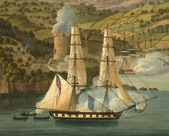
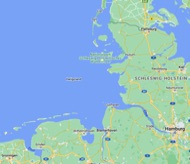
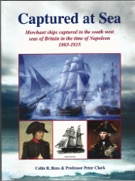
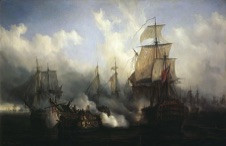
----------
Although not captained by a Raitt, a whaling vessel from Leith named Raith (occasionally given as Raitt in the local press) was also captured, according to 'The Dundee Whaling Fleet: Ships, Masters and Men'. "In July 1758 two French warships captured three whaling ships and chased an Aberdeen privateer, Hussar, for five hours, and in July 1780 there were a reported three enemy frigates and three sloops cruising off Shetland to ambush the returning whaling ships, Baltic traders and vessels from Archangel and Norway. In 1794 the warship Brest, one of a seven-strong French fleet headed by the 50-gun Le Brutus, captured the Dundee of Dundee off Duncansby Head, and although the Royal Navy recaptured her, most the crew were taken prisoner. That same French fleet captured the whaling ship Raith of Leith, removed most of the crew, placed 16 men on board and sent her to Bergen in Norway. Three of the original crew were left on board, but one was washed overboard. When the French got drunk, Burrish Lyons, the mate and the remaining Greenland men, attacked them with flensing knives, drove half below and half into a small boat and took Raith into Shetland. According to the Rev John Mill, Lyons was a Shetlander; he was later promoted to master of Raith." For a bit more about the Raith and her loss to Arctic ice, see under Raith of Leith whaler.
